Table of Contents
ToggleSuiteCRM Review: Is This the Startup’s Secret Weapon in customer management relationship software?
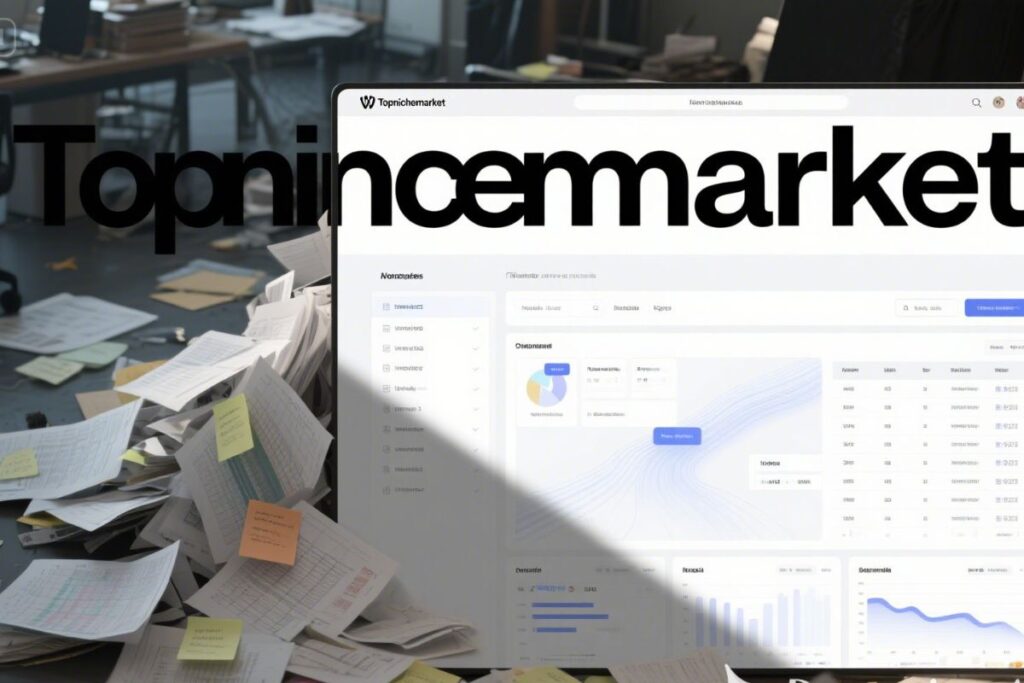
SuiteCRM Review Is This the Startup’s Secret Weapon in customer management relationship software
Embarking on the startup journey is akin to navigating a thrilling, unpredictable ocean. Every day brings new challenges, requires boundless energy, and demands an unwavering focus on one crucial element: the customer. Without customers, there’s no business, no growth, no future. This fundamental truth makes selecting the right tools for managing those vital relationships not just important, but existential. For many budding ventures, the search for effective customer relationship management platforms begins early and is fraught with decisions about complexity, features, and, most importantly, cost.
This article dives deep into one such platform – SuiteCRM – through a unique lens. We will explore over a decade of hands-on experience within the demanding, resource-scarce environment of not just one, but five different startups. This isn’t a theoretical analysis or a fleeting trial review. This is an honest, long-term account from the trenches by someone who has relied on this system (and its predecessor, SugarCRM) since 2008, and specifically SuiteCRM since its inception in 2015. It’s a story of finding a reliable partner in the chaotic startup world, of overcoming technical quirks, and of building critical business processes upon a foundation of open-source software.
We’re here to peel back the layers of SuiteCRM, to understand its core role in a startup’s quest for survival and growth, celebrate its unexpected strengths, frankly discuss its areas for improvement, reveal the practical steps taken to make it a dependable ‘work horse’, and ultimately, provide a verdict rooted in years of daily use. If you’re a startup founder, a sales leader in a growing team, or simply evaluating customer relationship management platforms for your venture, this review offers a hard-won perspective that goes far beyond the spec sheet.
The Crucible of Startups: Navigating Customer Management Relationship Software with 10+ Years on the Front Lines
In the frantic early days of a startup, resources are scarce, time is a luxury, and priorities shift by the hour. Amidst the whirlwind of product development, fundraising pitches, and team building, one task looms largest and most critical: finding and keeping customers. This isn’t a ‘nice-to-have’; it’s the very oxygen of the business. The ability to effectively manage interactions, track leads, follow up diligently, and understand your customer base is the difference between trajectory and stagnation.
This is precisely where customer management relationship software ceases to be just a tool and becomes a fundamental requirement. Without a structured way to handle leads and customers, startups risk dropping crucial balls. A potential investor might be missed due to a forgotten follow-up, a valuable lead slips away because their interaction history wasn’t tracked, or a sales opportunity is lost because quoting was a messy, manual process. The need is immediate and profound for effective customer management relationship software.
Before implementing a dedicated system, many startups make do with makeshift solutions: scattered spreadsheets, personal email folders, handwritten notes. This often works for the first handful of contacts, but as soon as activity picks up, this approach collapses under its own weight. Information becomes siloed, collaboration is impossible, and the vital 360-degree view of the customer vanishes. The author’s journey, starting with SugarCRM in 2008 and evolving to SuiteCRM in 2015, reflects a long-standing recognition of this critical need. Across five different startup ventures, the consistent requirement has been a robust system to manage customer interactions effectively. This deep, continuous engagement – totaling over 10 years with the system family – provides a unique vantage point to evaluate SuiteCRM’s suitability as customer management relationship software for the startup environment.
The purpose of this article is not just to list features, but to share the real-world experience of relying on SuiteCRM as the primary customer management relationship software across multiple startup life cycles. It’s an account of adapting the platform to evolving business needs, identifying its strengths when budgets are tight, confronting its weaknesses head-on, and finding practical ways to ensure it performs as a reliable partner in the demanding pursuit of growth. We will walk through the journey, from daily usage patterns to the technical hurdles encountered and the successful strategies implemented to overcome them.
SuiteCRM: Forging the Path to Growth with Essential Relationship Management Software
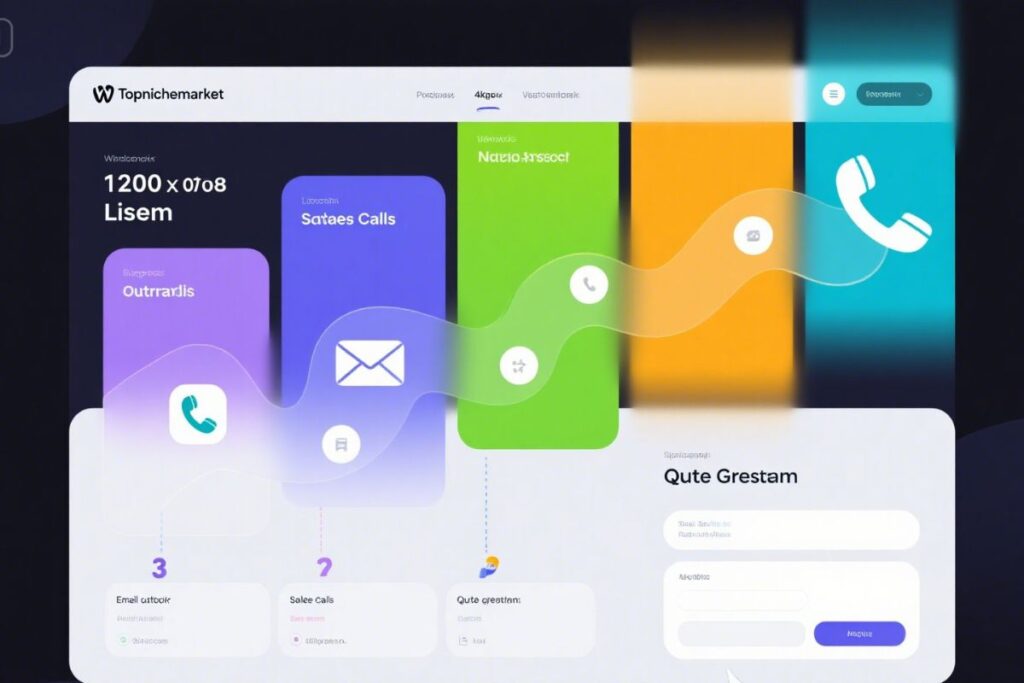
SuiteCRM Forging the Path to Growth with Essential Relationship Management Software
For a startup, effective sales and customer engagement are not merely departmental functions; they are the engine driving the entire business forward. In the early stages, every lead is precious, every conversation is an opportunity, and every customer is a champion waiting to be delighted. This intense focus necessitates relationship management software that is not only capable but also intuitive enough to support agile, often scrappy, sales processes. Relying on scattered spreadsheets or individual inboxes quickly becomes unsustainable as the volume of interactions grows. It’s like trying to build a complex machine with loose parts – inefficiency, errors, and missed opportunities are inevitable without robust relationship management software.
The author’s experience underscores the transformative power of a dedicated system like SuiteCRM in this context. It provides the structure and central repository needed to move beyond chaos and into a streamlined, repeatable process for engaging with potential and existing customers. Instead of hunting through emails or trying to recall details from memory, all critical information is consolidated in one place, making it the single source of truth for customer interactions. This transition from makeshift tools to a structured platform isn’t just about organization; it’s about enabling the startup to scale its sales and marketing efforts effectively, supported by powerful relationship management software.
Specifically, the author relies on the latest SuiteCRM LTS (Long Term Support) version to handle several core, non-negotiable startup activities:
- Collecting Leads from All Over: Startups generate leads from diverse sources – website forms, networking events, referrals, social media, inbound inquiries. SuiteCRM provides a centralized place to capture these leads, ensuring none fall through the cracks. This is paramount because, in a startup, a missed lead isn’t just a potential lost sale; it’s a missed opportunity to build momentum and gather crucial market feedback. The software acts as the crucial front door for all incoming potential business, serving effectively as essential
relationship management software. - Sending Introductory Emails and/or Newsletters to Leads: Once leads are captured, timely and relevant communication is essential. SuiteCRM allows for the creation of targeted email campaigns or simple one-off introductory emails. This capability is vital for nurturing leads, providing initial information, and keeping the startup top-of-mind. It moves beyond manual, error-prone mass emailing from personal accounts to a more trackable and scalable approach within the
relationship management software. - Scheduling Follow-up Calls Based on Campaign Hits: Email campaigns are rarely effective on their own. The real value comes from knowing who engaged and following up promptly. SuiteCRM’s tracking allows the author to identify leads who opened emails or clicked links, triggering crucial follow-up activities. Scheduling calls directly within the system ensures these critical next steps are planned and not forgotten, directly connecting marketing activity to sales action within the
relationship management software. - Plan and Document Calls in the Calls Module: Every conversation with a lead or customer is a valuable data point. The Calls module in SuiteCRM provides a structured way to plan outgoing calls, log details of incoming calls, and, most importantly, document the conversation’s outcome, action items, and next steps. This documentation is invaluable for maintaining context, collaborating with team members (if any), and ensuring a consistent customer experience within the
relationship management software. It transforms transient conversations into persistent, actionable records. - Make Quotes for Customers: Converting a lead into a customer often culminates in a proposal or quote. SuiteCRM’s ability to generate quotes directly from customer or opportunity records streamlines this process. Professional-looking quotes built within the system save time, reduce errors compared to manual document creation, and provide a clear record of what was sent to whom and when. This capability is critical for moving deals forward efficiently, supported by the
relationship management software.
These specific use cases highlight how SuiteCRM functions as indispensable relationship management software for a startup. It provides the backbone for managing the fundamental sales cycle: attracting interest (leads/campaigns), engaging actively (emails/calls), and closing deals (quotes). By centralizing these processes, it empowers the startup to focus its limited energy on building relationships rather than wrestling with administrative clutter. It’s a clear step up from the chaos of spreadsheets, offering a structured path toward converting potential into paying customers with robust relationship management software.
Unpacking the SuiteCRM Advantage: Why This Customer Relationship Management Platform Shines for Lean Startups
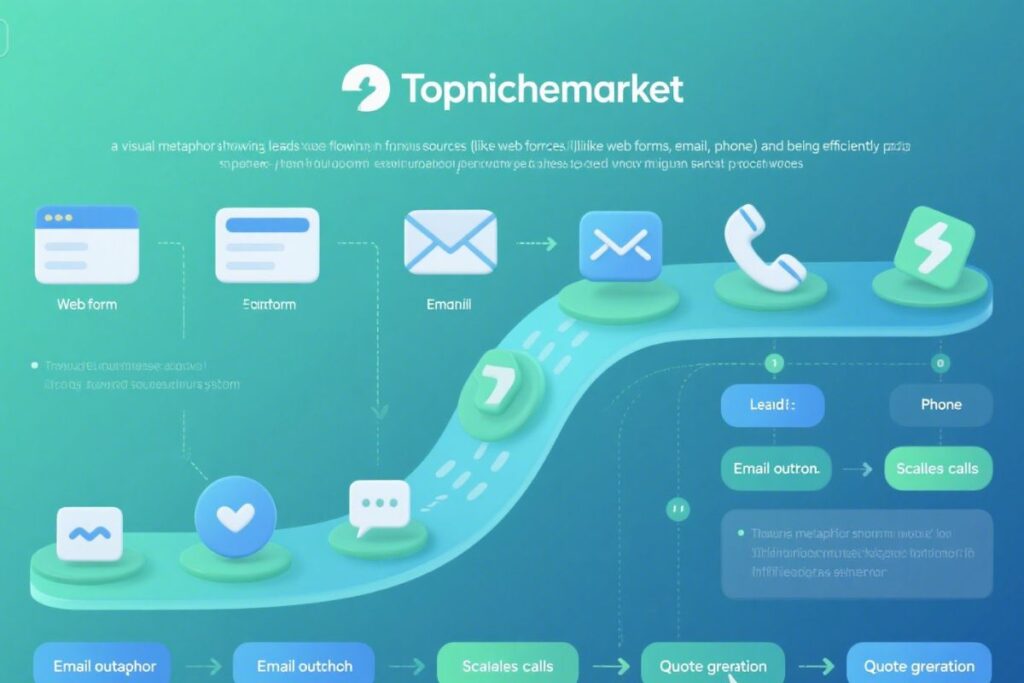
Unpacking the SuiteCRM Advantage Why This Customer Relationship Management Platform Shines for Lean Startups
After spending over a decade navigating the unpredictable seas of startup life, relying heavily on customer relationship management platforms to stay afloat and grow, certain qualities rise to the top as non-negotiable. For startups operating with razor-thin margins and needing maximum impact from every dollar and every hour, the right CRM isn’t just about features; it’s about finding a system that aligns with their unique constraints and ambitious goals. SuiteCRM, in the author’s extensive experience, possesses several key advantages that make it particularly well-suited for this environment. These aren’t theoretical benefits; they are the real-world reasons why this platform has been the consistent choice across multiple ventures as a preferred option among customer relationship management platforms.
The Unbeatable Price Tag: Open Source Power for the “Piss Poor” Startup
Let’s be blunt: startups are often “piss poor.” Capital is scarce, and every expense is scrutinized. Proprietary customer relationship management platforms with per-user monthly fees can quickly become prohibitively expensive, especially as a startup begins to add sales team members or expand its use of the software. This is where SuiteCRM’s open-source nature delivers a colossal, undeniable advantage. There are no licensing fees for the software itself. You might have costs associated with hosting (if self-hosting) or potentially support/consulting, but the core software comes free.
For a startup, this affordability isn’t just about saving money; it’s about flexibility and allocation of precious resources. The capital not spent on customer relationship management platforms licenses can be reinvested into marketing, product development, or hiring. It removes a significant barrier to entry and allows even the earliest-stage startup to implement a robust, feature-rich system from day one without crippling monthly costs. This financial accessibility is arguably the single most compelling reason SuiteCRM stands out in the crowded CRM market for budget-conscious startups. It democratizes access to powerful relationship management software.
A Pleasant Journey: Navigating the SuiteCRM User Interface
The user interface (UI) of any software, especially one used daily for core business processes, is critical. If a system is confusing, clunky, or aesthetically unappealing, users will resist adopting it, leading to inconsistent data and ultimately, failure of the system’s purpose. The author describes SuiteCRM’s UI as “understandable and pleasant.” This might sound simple, but for a busy startup team, often without dedicated CRM administrators or extensive training budgets, an intuitive interface is invaluable for customer management relationship software.
A pleasant UI means less time spent figuring out how to use the system and more time spent using it to manage customers. It reduces the learning curve for new users, whether they are founders, sales staff, or customer support personnel. The ability to easily navigate modules, input data efficiently, and quickly find the information needed contributes directly to productivity. In the context of customer management relationship software, this translates to more effective sales calls, better documented interactions, and a higher likelihood that the system is actually used consistently, which is the key to its success.
Speed and Agility: Experiencing Top-Notch Performance from Your Relationship Management Software
In the fast-paced startup world, speed matters. Waiting for software to load, process, or save data is not just annoying; it’s a drain on efficiency and morale. The author’s description of SuiteCRM’s performance as “fast, efficient, and ‘top notch'” is a significant endorsement, especially considering the system has been used continuously over many years and likely contains a substantial amount of data.
Excellent performance means that sales representatives can quickly log calls after hanging up the phone, founders can rapidly access customer histories before a meeting, and marketing teams can run reports without lengthy delays. Responsive relationship management software keeps the workflow flowing smoothly, preventing frustration and enabling users to get more done in less time. For startups where every minute counts, this kind of performance contributes directly to higher productivity and a better return on the investment of time and effort into the CRM system.
Feature Arsenal: Having Everything You Need Right Out of the Box
One common challenge when evaluating customer relationship management platforms is finding a system that has the necessary features without being overly complex or requiring expensive add-ons from day one. The author’s experience across multiple startups indicates that SuiteCRM possesses “everything required” by their companies. This suggests a robust core set of features that cover the essential needs of a growing business needing reliable customer relationship management platforms.
This typically includes core modules for managing Accounts (companies), Contacts (individuals), Leads (potential customers), Opportunities (potential deals), Activities (calls, meetings, tasks), Calendar, Email, and basic reporting. Having these fundamental building blocks readily available means a startup doesn’t need to immediately look for integrations or custom development to handle their basic sales and customer management processes. It provides a comprehensive starting point that can support the business from its initial phase through early growth. While specific niche features might require customization later, the core functionality is present, making it a powerful out-of-the-box solution for many startup customer management relationship software needs.
The Holistic Experience: SuiteCRM as a Complete Solution for Customer Management Relationship Software Needs
Synthesizing these positives, the overall experience described is one of satisfaction. SuiteCRM, in this user’s experience, provides a complete and satisfactory CRM experience, particularly when viewed through the lens of startup requirements and constraints. It offers a powerful combination of affordability, usability, performance, and core features, distinguishing it among customer relationship management platforms.
It’s not just one isolated strength, but how these elements converge. The low cost makes it accessible. The good UI makes it usable. The strong performance makes it efficient. The feature set makes it capable. Together, these factors position SuiteCRM as a viable and effective choice for startups needing reliable customer relationship management platforms without the significant financial overhead associated with many commercial alternatives. This long-term perspective highlights that despite being open source, it is capable of serving as the central hub for customer operations over many years and across different business contexts, fulfilling comprehensive customer management relationship software needs.
Navigating the Waters: Technical Hurdles and Areas for Improvement in This Customer Relationship Management Platform
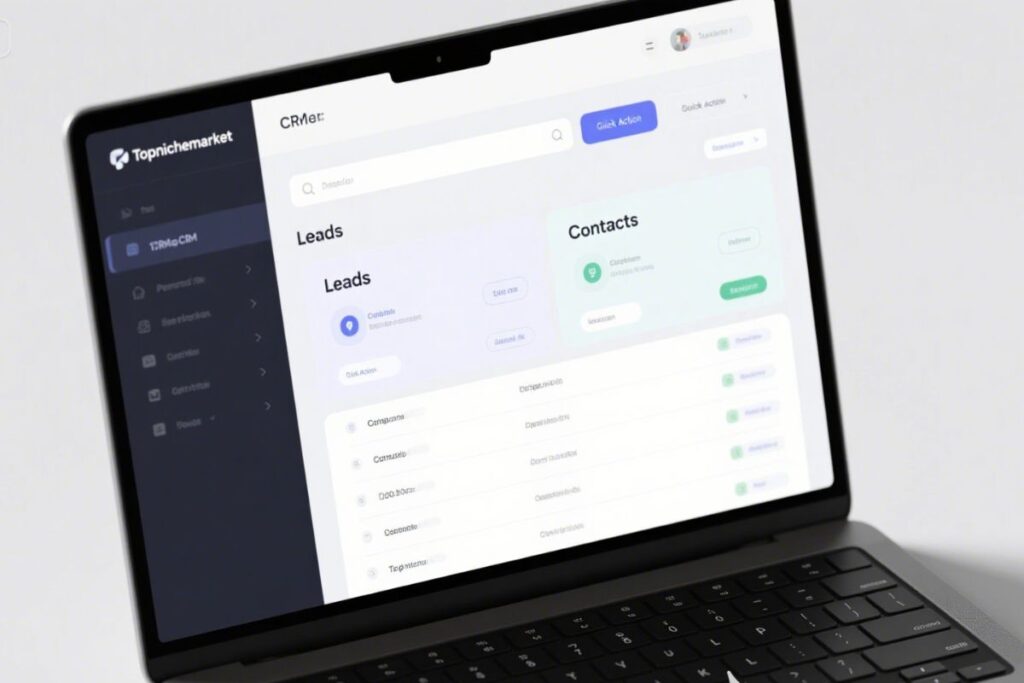
Navigating the Waters Technical Hurdles and Areas for Improvement in This Customer Relationship Management Platform
No software is perfect, and SuiteCRM, despite its strengths, is no exception. A truly honest review, especially one spanning a decade of real-world use within demanding startup environments, must address the challenges and areas where the system falls short or requires extra effort. These aren’t necessarily fatal flaws, but they represent friction points that users, particularly those in startups with limited technical resources, need to be aware of when evaluating customer relationship management platforms. The author’s extensive experience has highlighted specific technical areas that consistently require attention or present difficulties. Understanding these challenges is crucial for any startup evaluating SuiteCRM as their customer relationship management platform.
The Tricky Tango with iCal: Syncing Your World Requires a Little Finesse
For any sales or customer-facing role, calendar integration is not a luxury; it’s a necessity. Scheduling meetings, planning calls, and blocking out time for tasks needs to sync seamlessly with the user’s primary calendar application, typically on their phone or desktop. The author specifically mentions that iCal integration “always requires tweaking to work correctly.” This refers to the integration method that allows external calendar applications (like Apple Calendar, Outlook, or Google Calendar via CalDAV/iCal standards) to sync with the activities (calls, meetings) scheduled within SuiteCRM.
The problem isn’t the lack of an iCal feature, but its consistent reliability. Users expect calendar sync to be fire-and-forget – set it up once, and events flow back and forth effortlessly. When it requires “tweaking,” it means time must be spent diagnosing connection issues, resolving sync errors, or reconfiguring settings. For a busy startup founder or salesperson, this is frustrating and can lead to missed appointments or a lack of confidence in the system, despite its role as relationship management software. Reliable calendar synchronization is fundamental to effective time and relationship management, and this area has been a persistent point of friction according to the author’s experience.
Embracing Global Characters: Ensuring Your Relationship Management Software Speaks Every Language (and Alphabet)
In today’s globalized business landscape, startups interact with customers and leads from all over the world. This means dealing with a wide variety of characters and alphabets. The author’s specific mention of “scandinavian letters need to work in the calendar” points to an issue with character encoding or rendering, particularly within certain modules like the Calendar. When special characters (like å, ä, ö, ø, æ) don’t display correctly, they might appear as question marks (??) or other garbled text.
While this might seem like a minor aesthetic issue, it has significant practical implications for customer management relationship software. Incorrect character display can lead to misspellings of names and company names, unprofessional communication in calendar invites or emails generated by the system, and potential confusion when trying to search or sort records. For startups expanding internationally or even just dealing with names outside the standard English alphabet, ensuring that their relationship management software correctly handles a broad range of characters is essential for data integrity and professional communication. This indicates that out-of-the-box character support, at least in certain contexts, has required attention.
The Ever-Present Email Puzzle: Configuring Communication Pathways
Email is the lifeblood of business communication, and its integration within a CRM is crucial for sending campaigns, individual emails, and tracking correspondence. The author notes that despite recent improvements, email configuration is “still complicated, despite recent improvements, taking significant time.” Setting up email within a customer relationship management platform involves configuring SMTP servers, handling authentication (including potentially complex OAuth for services like Google or Microsoft), setting up inbound email for lead capture or support case creation, and managing email templates.
While modern SuiteCRM versions have made strides, this process can still be technically challenging. Misconfigurations can lead to emails not sending, not being received, or landing in spam folders – all detrimental outcomes for a startup relying on email for sales and marketing, even when using robust customer relationship management platforms. The fact that it still takes “significant time” suggests that getting email reliably configured requires technical knowledge and patience, which can be a barrier for non-technical users. For effective customer relationship management platforms, seamless and reliable email is paramount, and this area remains a point of complexity requiring dedicated effort.
The Underlying Need for Technical Savvy (or Willingness to Learn)
Synthesizing these specific technical challenges – iCal, character sets, and email configuration – reveals a broader point: while SuiteCRM’s user interface might be pleasant for daily tasks, its setup and configuration can demand a certain level of technical comfort or a willingness to troubleshoot. This isn’t necessarily a “con” for all startups, especially those with technically-minded founders or team members. However, it’s a critical consideration for those evaluating the system as their customer relationship management platform.
Unlike some fully managed SaaS customer relationship management platforms where these technical details are abstracted away, an open-source platform like SuiteCRM, particularly in a self-hosted or minimally supported environment, requires the user to potentially delve into system settings, understand server configurations, and even interact with the underlying code or community discussions to resolve specific issues. This requirement means that while the software is free, there’s a potential ‘cost’ in terms of the technical expertise and time needed for configuration and troubleshooting. Recognizing this need upfront is vital for a startup to realistically assess if SuiteCRM is the right fit for their internal capabilities regarding customer management relationship software.
Becoming the Master Fixer: Taking Control of Your Customer Management Relationship Software Through Manual Patches

Becoming the Master Fixer Taking Control of Your Customer Management Relationship Software Through Manual Patches
One of the defining characteristics of open-source customer management relationship software like SuiteCRM is the community-driven nature of its development. While this means the core software is free and customizable, it also implies a different model for updates and bug fixes compared to proprietary systems. Bugs are often identified and fixed by developers within the community, with fixes sometimes becoming available on platforms like GitHub before they are formally released in an official update. The author’s experience highlights a proactive approach to maintaining functionality, which is a valuable insight for anyone considering open source customer management relationship software.
Instead of simply waiting for the next official LTS (Long Term Support) release to include bug fixes, the author describes a practice of “pulling specific fixes manually from GitHub after each LTS upgrade.” This is a common strategy in the open-source world. When a specific bug is encountered that impacts critical functionality (like the iCal sync or character display), users can often find the proposed fix – usually in the form of a ‘Pull Request’ (PR) – on the project’s code repository (GitHub for SuiteCRM). If the fix looks correct and relevant to their issue, they can manually apply that patch to their own installation of the customer management relationship software.
The author specifically mentions two issues that were addressed through this manual patching approach:
- Scandinavian letters showing as ??: This is a classic character encoding problem. The fix likely involved ensuring the database connection, application settings, and potentially the display rendering logic correctly handled UTF-8 or other appropriate character sets. Finding and applying the specific code change from GitHub resolved this data integrity and display issue, ensuring names and other text appeared correctly within the
customer management relationship software. The author mentions PR 7691 as the source of this fix. - iCal calendar sync asking for username/password: This points to a specific authentication or connection problem with the iCal/CalDAV integration. Users attempting to sync their external calendars would be repeatedly prompted for login credentials, preventing the sync from working within the
relationship management software. The fix addressed the underlying cause of this authentication failure within the iCal sync code. The author initially referenced PR 7691 for this but later clarified the correct PR was 4420. This attention to detail, even remembering specific PR numbers, underscores the hands-on nature of resolving these issues.
This practice of manually applying fixes from GitHub after an LTS upgrade demonstrates a significant aspect of managing open-source relationship management software. It requires: Awareness (Knowing where to look for solutions – forums, GitHub issues), Technical Comfort (The ability to understand how to apply code changes or patches to a server environment), and Proactivity (Not waiting passively for official releases).
The positive outcome of this effort is crucial: the author reports happiness with performance after applying these manual fixes. This reveals a key trade-off and a practical instruction for other users: while you might encounter specific bugs or rough edges with your customer management relationship software, the open-source model often provides the means (via community and code repositories) for technical users to address them proactively, leading to a more stable and higher-performing system tailored to their specific needs. It highlights that the effort required for manual fixes can pay significant dividends in system reliability and user satisfaction.
The “Work Horse” Revealed: Peak Performance and Stability in Your Relationship Management Software (After Strategic Tweaks)

The Work Horse Revealed Peak Performance and Stability in Your Relationship Management Software (After Strategic Tweaks)
The term “work horse” carries significant weight in the context of business software, especially for startups. It doesn’t conjure images of sleek, cutting-edge design or hyped-up, bleeding-edge features. Instead, it implies reliability, endurance, and the quiet, consistent ability to perform essential tasks day in and day out, under pressure. This is the description the author ultimately applies to SuiteCRM: a “very good, stable and reliable work horse.” This transformation, particularly the emphasis on stability after applying necessary fixes, is a critical takeaway from this decade-long review of the relationship management software.
As mentioned earlier, the author describes SuiteCRM’s performance as “top notch.” This isn’t just initial speed; it’s the sustained efficiency even with years of data. This speed, combined with the stability achieved through proactive technical adjustments, forms the foundation of its work horse capability. A fast system that crashes or corrupts data isn’t reliable. A stable system that is painfully slow isn’t efficient. The synergy of speed and stability, unlocked through understanding and addressing technical nuances, is what makes SuiteCRM a dependable tool in this user’s experience as relationship management software.
Framing SuiteCRM as a “very good, stable and reliable work horse” speaks volumes. It means the system consistently handles the core tasks it’s relied upon for – managing leads, tracking calls, generating quotes – without unexpected downtime or data errors. For a startup, this reliability is paramount. Downtime in customer relationship management platforms means lost productivity, frustrated sales staff, and potentially missed business. A stable platform minimizes these risks, allowing the team to focus on customers rather than fighting with their customer relationship management platforms.
Furthermore, the author notes that this stable and reliable system is effective even for the “almost IT-illitterate start-up sales man.” This point is incredibly important. It suggests that while the initial configuration and technical troubleshooting might require some expertise (or the willingness to learn), the daily use of SuiteCRM, once properly set up and stabilized with necessary fixes, is straightforward enough for users who aren’t technically inclined. The core UI and workflow for managing leads, contacts, activities, and opportunities are accessible. The effort invested in achieving stability via tweaks pays off by making the system usable and trustworthy for the entire team, regardless of their technical background, proving its value as robust customer management relationship software.
This perspective provides a crucial nuance: SuiteCRM isn’t necessarily plug-and-play in every technical aspect, but the effort to stabilize it transforms it into a highly dependable and user-friendly tool for its primary purpose – managing customer relationships effectively. It’s a testament to the potential of open-source relationship management software to become a powerful, customized engine for business operations, provided the user is prepared to engage with its technical underpinnings where necessary. The reward is a stable platform that reliably supports the sales process, empowering even non-technical team members with effective relationship management software.
The Startup Dream: Unlocking Tremendous Value with an Affordable Customer Relationship Management Platform
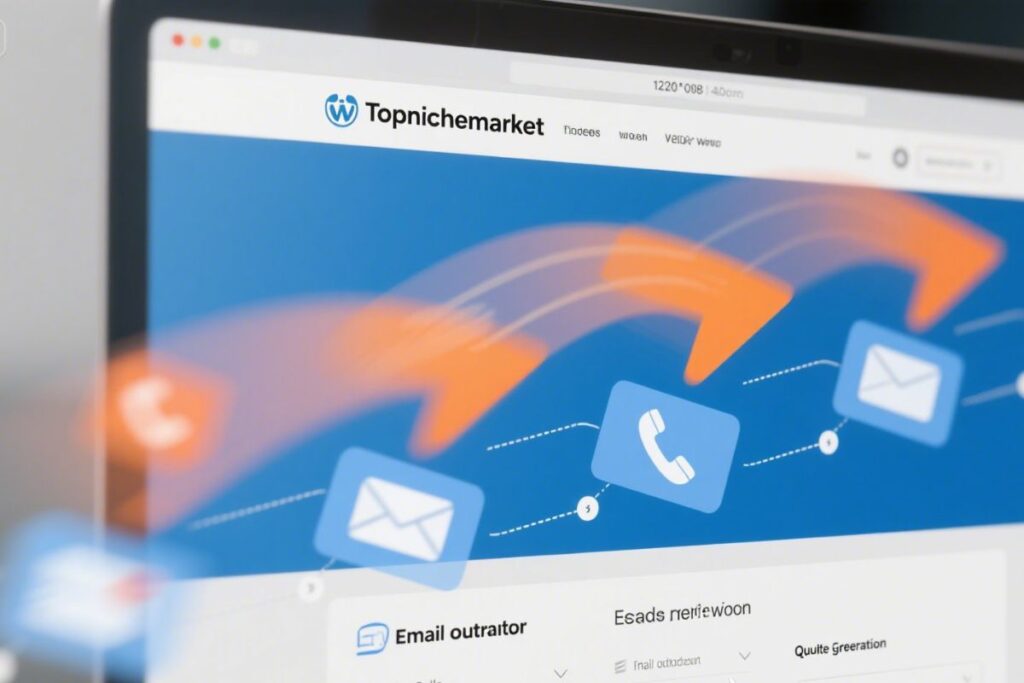
The Startup Dream Unlocking Tremendous Value with an Affordable Customer Relationship Management Platform
For any startup, especially those bootstrapping or operating on limited seed funding, capital efficiency is not just a goal; it’s a survival mechanism. Every expenditure is weighed against its potential return and its impact on the runway – the amount of time the company can operate before needing more funding or becoming profitable. In this context, the cost of customer relationship management platforms can be a significant barrier. Enterprise-grade solutions, while feature-rich, often come with price tags that are simply out of reach for early-stage ventures. This is where SuiteCRM’s affordability transcends being just a “positive” and becomes a core part of its value proposition and suitability for the startup ecosystem among available customer relationship management platforms.
As an open-source platform, the software itself has no license cost. This fundamental difference from subscription-based SaaS CRMs like Salesforce, HubSpot, or even many smaller proprietary players, is transformative for startups. Instead of facing recurring monthly fees per user – which can quickly escalate as a sales team grows – startups using SuiteCRM primarily face costs related to hosting (if self-hosting) or potential support/consulting services. This dramatically lowers the total cost of ownership, particularly in the crucial early years when cash flow is tight, making it an appealing customer relationship management platform.
The value unlocked by this affordability is tremendous. A startup can implement a powerful, feature-rich customer relationship management platform from day one, establishing best practices for lead management and customer interaction without draining precious capital. This allows resources to be directed towards core business activities like product development, customer acquisition, or marketing, which directly contribute to growth. It eliminates the need to delay implementing proper customer management relationship software until funding is secured or revenues reach a certain level, preventing the chaos and missed opportunities that result from relying on inadequate tools. While specific niche features might require customization later, the core functionality is present, making it a powerful out-of-the-box solution for many startup customer management relationship software needs.
The author’s history of implementing SuiteCRM across five different startups underscores this point. It wasn’t a one-off decision; it was a repeated choice based on the system’s ability to deliver essential relationship management software capabilities within the financial constraints inherent to starting new ventures. This consistent re-adoption across various contexts speaks volumes about the perceived value and cost-effectiveness of SuiteCRM for the startup model. It provides a robust platform that can support the business from its initial founders-as-sales stage through hiring a small sales team, all while keeping operational costs manageable as customer relationship management software. For startups prioritizing function and affordability, SuiteCRM presents a compelling case as a primary customer relationship management platform. It allows them to invest in their customer relationships without breaking the bank.
The Enduring Partnership: Final Verdict on SuiteCRM as the Heart of Your Startup Customer Management Relationship Software Strategy
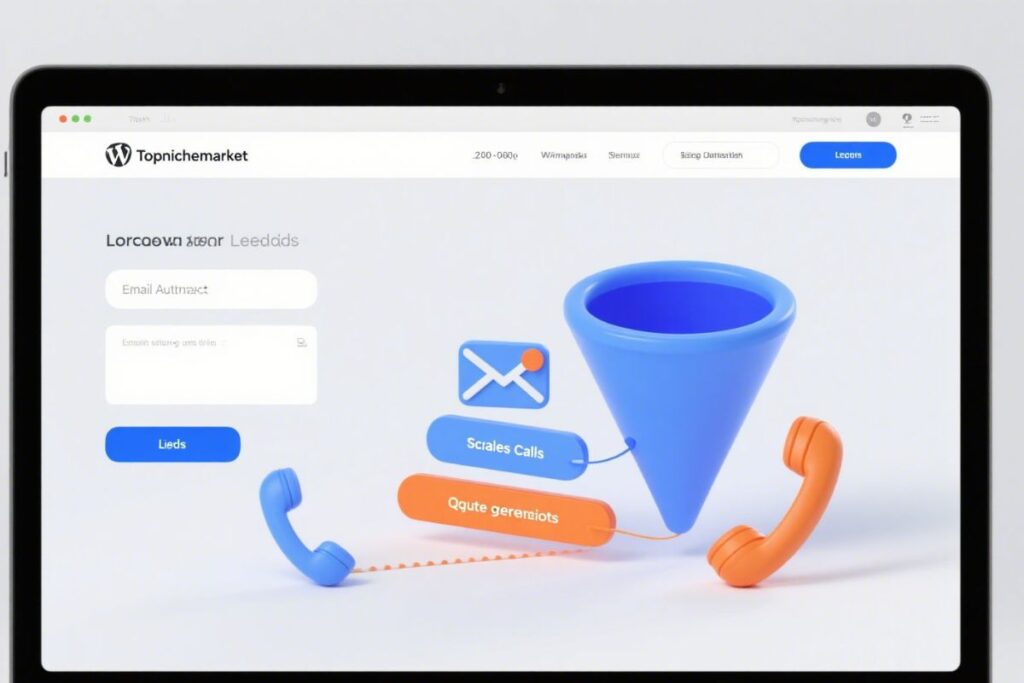
The Enduring Partnership Final Verdict on SuiteCRM as the Heart of Your Startup Customer Management Relationship Software Strategy
Ten years is a significant amount of time in the fast-evolving world of technology, and it’s an eternity in the volatile landscape of startups. To rely on a single type of customer management relationship software for over a decade, across five different ventures, speaks volumes about its core suitability and enduring value. This extensive, real-world experience provides a uniquely credible perspective on SuiteCRM as a customer relationship management platform for startups. The journey, as shared through the author’s account, has revealed both the significant strengths and the manageable challenges of making SuiteCRM the central hub for customer operations and a key piece of relationship management software.
At its heart, SuiteCRM has proven to be a highly capable “work horse” for the essential sales and customer management processes that are critical for startup survival and growth. Its ability to reliably handle lead collection, email communication, call planning and documentation, and quote generation forms the backbone of an effective early-stage sales engine. It provides the necessary structure to move beyond manual, inefficient methods and establish a clear, repeatable process for engaging with potential and existing customers using effective customer management relationship software.
The key advantages, particularly its affordability rooted in the open-source model, its user-friendly interface for daily tasks, and its robust performance, make it an extremely attractive option for startups facing tight budgets and needing immediate functionality. These strengths directly address the core needs of lean teams focused on customer acquisition and retention without excessive overhead. Finding a customer relationship management platform that delivers this level of capability without crippling costs is a significant win for any startup.
However, the review also honestly highlights that SuiteCRM is not without its technical quirks. The challenges with iCal integration, handling of certain character sets, and the complexity of email configuration are real areas for improvement in this customer relationship management platform. These are areas that require attention and, crucially, a certain level of technical comfort or the willingness to invest time in troubleshooting and applying fixes. The author’s successful strategy of pulling manual fixes from GitHub demonstrates that while these hurdles exist, they are often solvable with a proactive approach, transforming the system into a reliable tool after these tweaks are applied, solidifying its place as dependable relationship management software.
The important takeaway for other startups is this: if you need a powerful, highly capable relationship management software and affordability is a top priority, SuiteCRM is absolutely worth considering among customer relationship management platforms. Be aware that achieving maximum stability and functionality, especially with specific integrations like calendar sync or complex email setups, might require technical effort. However, the reward for this effort, based on this extensive 10-year journey, is a very good, stable, and reliable platform that can genuinely serve as the central nervous system for your customer relationships as you grow. The author’s clear intention to “stay with SuiteCRM as long as it is developed” is perhaps the strongest possible endorsement of its long-term value and suitability as a startup CRM and essential customer management relationship software. For startups that value core functionality, are mindful of costs, and are prepared for potential minor configuration tweaks, SuiteCRM stands out as a powerful and proven customer relationship management platform option. It has proven its worth in the demanding environment of multiple startups over a decade, demonstrating its capability to be the enduring partner needed on the path to success with effective relationship management software.
“`















